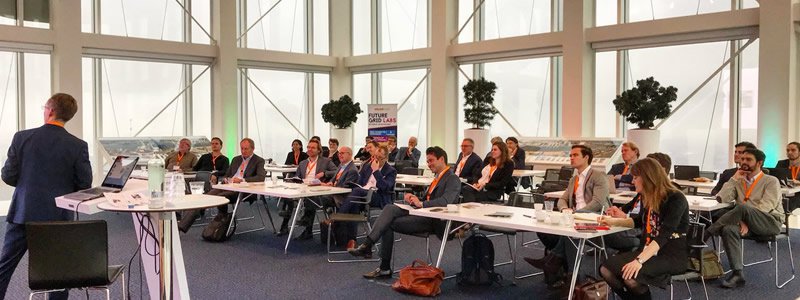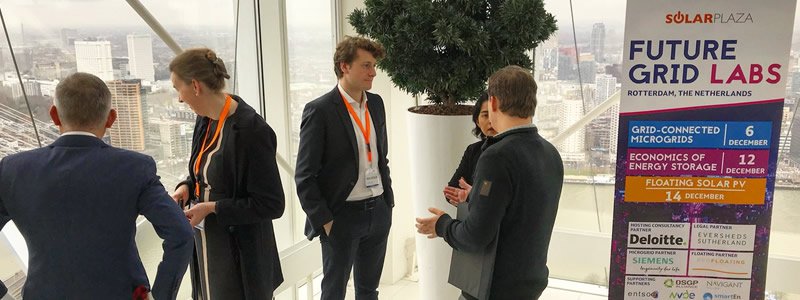
During yesterday’s FG Lab on Grid-connected Microgrids, many interesting points were raised on Microgrids. The simplest definition of a Microgrid was brought forward by Philip Gladek, CEO at Spectral, who described a Microgrid as a network of electricity supply and demand from different users (with storage if possible) that is able to operate both independently and connected to the centralized grid.
Roberto Rodriguez Labastida, Research Analyst at Navigant Research, kicked off the event by giving a presentation on the state of the market for grid-connected microgrids. He stated that microgrid development is mainly driven by higher penetration of rooftop PV, declining costs of storage and increased digitalization of the grid. Other contributing factors include the phasing out of FiTs, the increase of dynamic real-time power pricing and the declining reliability of the incumbent power grid (and extreme weather conditions).
Most of the current activity of microgrids is happening in APAC and North America, as the grids there are weaker, therefore they have a larger need for resilient microgrids. Roberto believes that Microgrids will yield $30 billion USD worth of investments globally by 2027, led by these two regions. When it comes to Europe, the resiliency need is lower and not as strong as in other markets.

At the moment, microgrids offer a complex value chain that both traditional players and startups can use. With the addition of heat pumps and EVs, grids are going to be dealing with much more energy supply and demand, leading to congestion points across the grid. Jan Pellis, from Stedin, thinks that Microgrids could be a solution for DSOs for congestion management as it helps to balance the transmission capacity in the grid and also allows for grid management and portfolio optimization. Jan also stated that Blockchain could be the solution for plug-and-play microgrids. Proper regulation, privacy & consumer protection and grid integrity need to be taken care of for utilities to jump on board.
Spectral presented an Amsterdam microgrid that was started in 2015 in Blijburg where the company was able to solve a lot of problems that we usually see with microgrids, one of them being grid dependency. Philip claims that without subsidies, the project is headed towards an investment payback period of a mere 5,5 years!
During the second half of the event, Paul Kessler from E.ON spoke about the Simris pilot showing that grid-connected microgrids are technologically feasible and help with the challenges that come of the implementation of large-scale renewables in the grid.
Dick van Veen, Business Development at Siemens, showed in his presentation on microgrids that moving beyond the experimentation phase is very difficult. According to Dick, implementation of large-scale local energy systems is more than just a technical challenge, stakeholder-management, regulation and access to financing impose significant challenges as well.

To close off the event, Nicolas Piau, co-founder and managing partner at TiLT Capital, took the stage and gave a presentation from the perspective of investors. According to him, investors are wary of one major theme: overvaluation. They ask themselves: Are we really going to get our money back or are we just riding the hype? However, they don't exclusively look at decades of (old) power plant management experience, but also look at the yield potential and added value in the long-term. The question now is: do you have the skill to integrate the complexity?
The speakers brought forward very compelling examples and use-cases that showed how complex it is to launch microgrid projects. Most of them agreed that these types of Future Grid Lab meetups, with different key energy players under one roof, are the best way to keep the grid flexibility conversation going and also to bring forth the different perspectives, both from utilities and end-consumers, that are strongly needed in order to successfully scale up microgrids.
